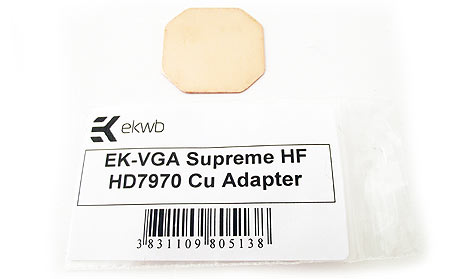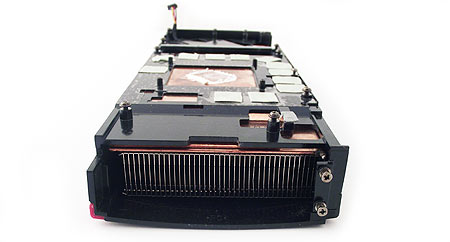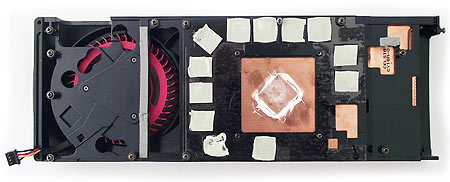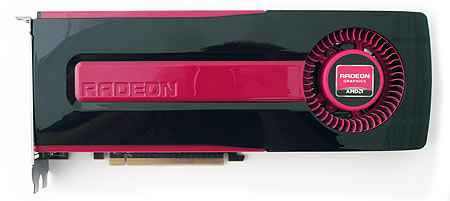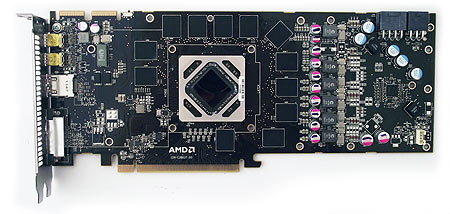Custom Cooling: Deepcool's Dracula And Arctic's Accelero Xtreme
Overclocking AMD's Radeon HD 7970 requires effective cooling, but the company's design is incompatible with most aftermarket heat sinks. Arctic and Deepcool claim to have solutions able to get the job done, without the reference cooler's loud fan.
AMD's Radeon HD 7970: Presenting A Unique Cooling Challenge
The factory-installed GPU coolers used on today’s graphics cards are generally pretty specific. You can't yank the thermal solution from a GeForce GTX 680 and drop it onto a GeForce GTX 660 Ti. In contrast, the companies that design aftermarket coolers try to make them a lot more flexible, accounting for differences in mounting holes, PCB dimensions, and the varying power and memory circuitry found on one card to the next.
Occasionally, AMD or Nvidia modify things even more dramatically, introducing a new design that sends ripples of change through the aftermarket. And that's exactly what happened when the Radeon HD 7970 and 7950 emerged, both of which come with reference coolers that abandon the typically-flat cooling block design. Instead, they use a large, thick shim around the Tahiti GPU, putting it below the surrounding components and relying on a raised contact area for heat transfer away from the graphics processor.
Of course, this cooler design renders AMD's other implementations unusable on the Radeon HD 7900s. It also torpedoes the multitude of aftermarket designs intended to work with as many cards as possible. Most of the companies that manufacture graphics card coolers are used to dealing with dramatic changes, however, and as we wrote this story up, there were already two vendors selling new products to replace the problematic thermal solution covering AMD's Radeon HD 7970: Arctic's Accelero Xtreme 7970 and Deepcool's Dracula 7970. We previewed the Dracula (sold under EKL's name) in Extreme Air Cooling: Our Five-Slot (Quiet) Radeon HD 7970.
In addition, one other manufacturer came up with a way to use a more generic heat sink and fan combination on the Radeon HD 7900-series cards. The EK-VGA Supreme HF HD7970 Cu Adapter from EKWB Cooling Solutions is basically a copper shim that fills the space between a more standard cooling block and the Radeon HD 7970's Tahiti GPU.
Available at frozencpu.com for $4, the adapter is perhaps the least-expensive solution for anyone who already has an aftermarket cooler and wants to re-use it. But how much efficiency do you lose? After all, the adapter is responsible for transferring thermal energy between two surfaces that'd normally be touching, and paste on each.
In order to illustrate the effect of this, we're testing Arctic's Accelero Xtreme III with the copper shim installed and comparing it to the performance of Arctic's Accelero Xtreme 7970. The only functional differences between them are the shape of their cooling blocks and the presence of the shim.
Let's consider the other coolers we're testing, too:
Get Tom's Hardware's best news and in-depth reviews, straight to your inbox.
| Header Cell - Column 0 | Reference Radeon HD 7970 Cooler | Arctic Accelero Xtreme 7970/III | Deepcool Dracula 7970 |
|---|---|---|---|
| Dimensions: | 277(L) × 96(W) × 32(H) mm | 288(L) × 104(W) × 54(H) mm | 254(L) × 100(W) × 44(H) mm |
| Weight: | 764 grams | 653 grams | 556 grams (heat sink only) |
| Fans: | Single 75 mm radial fan | Three 92 mm axial fans | Up to three 120 mm or two 140 mm axial fans (none included) |
| Power Cables: | Four-pin graphics card fan header | Two graphics card fan headers (three- or four-pin) | Dual-fan to single-fan header adapter |
| Construction: | Copper Cooling Block and Cooling Fins | Copper Cooling Block, Five 6 mm Copper Heat Pipes, and Aluminum Cooling Fins | Copper Cooling Block, Silver Nickel Plating, Six 6 mm Copper Heat Pipes, and Aluminum Cooling Fins |
| Price | N/A | 7970: $80 (Newegg)III: $78(Newegg) | $75 (MSRP)not including Fans |
AMD's reference cooler for the Radeon HD 7970 doesn't need heat pipes; it instead uses a copper vapor chamber with an array of fins attached. A single 75 mm centrifugal fan pulls air in from the chassis and exhausts out the I/O bracket. Technically, this is the approach we prefer to see taken because it doesn't recirculate hot air inside your case, affecting other components. Unfortunately, the resulting temperatures are merely acceptable, and the noise generated in getting there is pretty unbearable under load.
Do you see the raised GPU contact surface on the vapor chamber? This is what makes the Radeon HD 7900-series cooler unique.
Below is a picture of the naked reference card, showing the thick protective shim surrounding AMD's Tahiti GPU.
Current page: AMD's Radeon HD 7970: Presenting A Unique Cooling Challenge
Next Page Arctic Cooling Accelero Xtreme 7970 And IIIDon Woligroski was a former senior hardware editor for Tom's Hardware. He has covered a wide range of PC hardware topics, including CPUs, GPUs, system building, and emerging technologies.
-
aznshinobi Give me one please...Reply
But, would be nice to see the coolers compared to some mainstream solutions. IE the HIS IceQ X2 or Sapphire Toxic, etc. etc. -
andle riddum One warning to prospective buyers of Arctic products, their fans are really junk. I have/had S1 with turbo module, twin turbo, twin turbo PRO...and the fans failed within 1 year or so. Now I have normal fans zip tied, not prettyReply -
ShadyHamster I've never had a problem with arctic fans, the accelero xtreme for my HD5870 is still running perfect and its just over 2 years old now, same goes for the twin turbo i bought years ago for my HD3850.Reply
btw nice article :D -
cilliers Guys!Reply
This surely looks impressive (giant graphics card and oversize heat cooler), but is this "eye candy" for the technically inclined PC enthusiast really moving forward, or just another pile of copper pipes sold at a price established out of pure value perception? This article got me thinking... Are we unknowingly creating a market demand for cooling products that make little sense in the grand scheme of things, nor shows little technological advancement? Why do we get so excited when a graphics card becomes so hot during peak operation that it requires cooling beyond standard specification. In engineering terms, any system that transforms such a large amount of electrical energy into heat as a side effect would be considered inefficient. By creating a market for "aftermarket" cooling, we do not only show our tolerance for inefficiency, but also create a booming demand for lackluster "solutions".
-
apache_lives give me a reference card and cooler any day -- they last a lot longer (fans especially), cool the ram/vrm properly (manufacturers spec) and they help keep the card from bending/warping from the weight, and are less likely to be overclocked aka to spec = rock solid, long lasting cardReply
this applys to all mid-high end nvidia/ati(amd) video cards -
jtd871 @theconsolegamerReply
That's how you transfer heat from the shim to the unmodified Accelero III. I wonder if JB Weld would work better...although that would permanently attach the shim to the Accelero III.
@cilliers
The value is in the noise reduction at load. These processors run hot because they are doing a great deal of work pushing electrons around. Consider that incandescent bulbs work the same way - the friction causes the filament to get so hot that it glows. If you don't want a thermally hot/power hungry card for philosophical reasons, then don't buy one.
@W(h)yKnott
I imagine that "Dracula" is intended to connote sucking the heat away from the 79xx. The fact that these tests show that they are relatively inefficient at doing so makes for a humorous double entendre, like your handle. -
luciferano theconsolegamerWait, was really necessary to apply thermal paste to both faces of the shim?Reply
Unless you don't like not burning the GPU, pretty much. You might get away without it, but temps would be far higher. Maybe if you really lapped the cooler and shim you could get away with it, but I'd doubt that using no thermal paste at all would be a good idea even in that situation.
